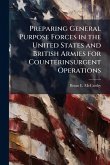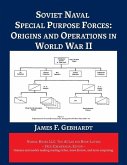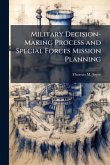The United States once again demonstrated its capability to defeat any nation state's military forces as evidenced by the actions of the Joint Forces of the United States in the decisive victory in Iraq. However once again, we see that the decisive phase of the campaign was not the Major Combat Operation but the follow on Stability and Reconstruction Operation. The United States has won the battle to replace the regime in Iraq but the outcome of the war to establish a stable and pro-liberty regime remains a question as of this time. The Members of Congress and others are asking questions as we complete the task in Iraq and continue to fight the Global War on Terror. Chief among the questions is the one that deals with the Army's structure and organization. The question of the best structure for Stability and Reconstruction Operations has sparked the debate on the best way for the Army to proceed in the Global War on Terror. There are two schools of thought: first, the Army should dedicate a portion of its forces to execute Stability and Reconstruction Operations, while the second, argues the Army should, through modularity, increase the capability of the total force to conduct Stability and Reconstruction Operations. The Army Chief of Staff (CSA) stood up Army Focus Area Stability Operations to review the arguments, provide the Army Staff with an overview, and offer a solution based on independent study and comprehensive in its process. The author participated in Task Force Army Focus Area Stability and Reconstruction Operations and this paper documents the process that was used to consider the question of, "What is the most appropriate force structure for the Army as we continue to execute Stability and Reconstruction Operations"? In this monograph, two opposing perspectives are examined and assessed. The idea that the Army should dedicate a portion of its forces to Stability and Reconstruction Operations and the idea that the Army should make itself more capable This work has been selected by scholars as being culturally important, and is part of the knowledge base of civilization as we know it. This work was reproduced from the original artifact, and remains as true to the original work as possible. Therefore, you will see the original copyright references, library stamps (as most of these works have been housed in our most important libraries around the world), and other notations in the work. This work is in the public domain in the United States of America, and possibly other nations. Within the United States, you may freely copy and distribute this work, as no entity (individual or corporate) has a copyright on the body of the work. As a reproduction of a historical artifact, this work may contain missing or blurred pages, poor pictures, errant marks, etc. Scholars believe, and we concur, that this work is important enough to be preserved, reproduced, and made generally available to the public. We appreciate your support of the preservation process, and thank you for being an important part of keeping this knowledge alive and relevant.
Bitte wählen Sie Ihr Anliegen aus.
Rechnungen
Retourenschein anfordern
Bestellstatus
Storno








